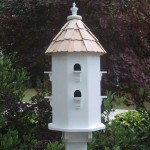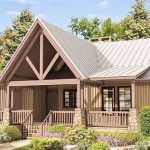How To Get Rid of Gnats In Indoor Potted Plants
Gnats, specifically fungus gnats, are a common nuisance for owners of indoor potted plants. These small, dark, flying insects thrive in moist environments, making the potting soil of houseplants an ideal breeding ground. While generally harmless to humans, large infestations can be detrimental to plant health and certainly annoying to the plant owner.
Fungus gnats are often mistaken for fruit flies, but their source is different. Fruit flies are attracted to overripe fruit and fermented liquids, whereas fungus gnats are drawn to the decaying organic matter in soil and fungal growth stimulated by consistently damp conditions. Understanding their life cycle and preferred habitat is crucial for effective eradication.
The fungus gnat life cycle consists of four stages: egg, larva, pupa, and adult. The adult gnats lay their eggs on the surface of moist soil or within cracks and crevices. The eggs hatch into larvae, which feed on fungi, decaying plant matter, and sometimes even plant roots. This larval stage is the most damaging to plants, particularly seedlings. The larvae then pupate in the soil before emerging as adult gnats, ready to reproduce.
The presence of adult gnats is the most obvious sign of an infestation. These small flies are often seen hovering around plants, flying near windows, or landing on nearby surfaces. However, spotting the larvae is also essential for confirming the problem and assessing the severity of the infestation. To check for larvae, carefully examine the top layer of soil. They will appear as tiny, translucent, worm-like creatures with a black head.
Several factors contribute to fungus gnat infestations in indoor plants. Overwatering is the most common cause, as it creates the consistently moist environment that these pests thrive in. Poor drainage also exacerbates the problem, preventing the soil from drying out between waterings. Using potting mix that is rich in peat moss or other organic matter can provide a readily available food source for fungus gnat larvae.
Identifying the specific type of gnat is important for choosing the most appropriate control methods. While fungus gnats are the most common culprits in indoor plants, other types of gnats, such as shore flies, can also be found in similar environments. Shore flies, however, are typically larger and stouter than fungus gnats and are more likely to be found near algae growth on the soil surface or in standing water.
Addressing the Root Cause: Soil Moisture Management
The most critical step in getting rid of fungus gnats is to address the underlying issue of excessive soil moisture. Allow the top inch or two of soil to dry out completely between waterings. This will eliminate the moist environment that the larvae need to survive and reproduce. Use a moisture meter to check the soil moisture levels before watering, or simply insert your finger into the soil to gauge its dryness.
When watering, water thoroughly but infrequently. This encourages deeper root growth, making the plants more resilient to drought conditions. Avoid frequent, shallow watering, as this only keeps the surface of the soil moist and creates a favorable environment for fungus gnats. Pour water directly onto the soil, avoiding wetting the foliage, as this can also contribute to fungal growth.
Improving drainage can also help to prevent fungus gnat infestations. Ensure that your pots have drainage holes at the bottom to allow excess water to escape. Consider adding a layer of drainage material, such as gravel or perlite, to the bottom of the pot to further improve drainage. Avoid using saucers that collect standing water, as these can also attract gnats. If you do use saucers, empty them regularly to prevent water from accumulating.
Using a well-draining potting mix is also crucial. Avoid using potting mixes that are high in peat moss, as this material retains a lot of moisture. Instead, opt for a potting mix that is specifically formulated for houseplants or that contains a higher proportion of perlite, vermiculite, or sand. These ingredients improve drainage and aeration, making the soil less hospitable to fungus gnats.
Topdressing the soil with a layer of sand or gravel can also help to prevent fungus gnats. The dry, inorganic barrier makes it difficult for adult gnats to lay their eggs in the moist soil below. A one-inch layer of horticultural sand or fine gravel is generally sufficient. Replace this layer every few months as it becomes mixed with the underlying soil.
Employing Trapping Methods for Adult Gnats
Trapping adult gnats can help to reduce their population and prevent them from laying more eggs. Several trapping methods are available, ranging from simple homemade solutions to commercially available traps.
Yellow sticky traps are a simple and effective way to trap adult gnats. These traps are coated with a sticky adhesive that attracts gnats. Place the traps near the base of the affected plants or hang them from nearby branches. Replace the traps when they become covered with gnats or dust. Yellow sticky traps are readily available online and in garden centers.
Vinegar traps are another popular homemade solution. Fill a small dish or jar with apple cider vinegar and add a drop or two of dish soap. The vinegar attracts the gnats, and the dish soap breaks the surface tension of the liquid, causing them to drown. Place the trap near the affected plants and replace the solution every few days or when it becomes full of gnats.
Wine traps are similar to vinegar traps but use red wine instead of vinegar. The procedure is the same: fill a small dish with red wine, add a drop of dish soap, and place the trap near the affected plants. Wine traps may be more effective at attracting certain types of gnats.
Potato traps can be used to target fungus gnat larvae. Place a slice of raw potato on the surface of the soil, cut-side down. The larvae will be attracted to the potato and will feed on it. After a few days, lift the potato and dispose of it, along with any larvae that have gathered underneath. Repeat this process until you no longer find larvae on the potato.
Electric bug zappers can also be used to control adult gnats, but they are generally less effective than other trapping methods. Bug zappers attract insects with ultraviolet light and then kill them with an electric shock. While they may kill some gnats, they can also kill beneficial insects and are not selective in their targeting.
Utilizing Biological and Chemical Controls
When cultural practices and trapping methods are insufficient to control a fungus gnat infestation, biological and chemical control options can be considered. However, it is important to use these options judiciously and to follow the instructions carefully to avoid harming the plants or the environment.
Beneficial nematodes are microscopic worms that parasitize fungus gnat larvae. These nematodes seek out and infect the larvae, eventually killing them. Apply the nematodes to the soil according to the product instructions. Beneficial nematodes are a safe and effective way to control fungus gnats without harming plants or beneficial insects. They are available online and in some garden centers.
Bacillus thuringiensis israelensis (Bti) is a naturally occurring bacterium that is toxic to fungus gnat larvae. Bti is available in several forms, including mosquito dunks and granules. Add Bti to the soil according to the product instructions. Bti is a safe and effective way to control fungus gnats without harming plants, pets, or humans. It is widely available in garden centers and online.
Hydrogen peroxide can be used to kill fungus gnat larvae in the soil. Mix one part 3% hydrogen peroxide with four parts water and pour the solution onto the soil. The hydrogen peroxide will kill the larvae on contact. This treatment can be repeated every few days until the infestation is under control. However, it is important to note that hydrogen peroxide can also harm beneficial soil microorganisms, so use it sparingly.
Insecticidal soap can be used to kill adult gnats on contact. Spray the affected plants with insecticidal soap, making sure to cover all surfaces, including the undersides of the leaves. Repeat the treatment every few days until the infestation is under control. Insecticidal soap is a relatively safe option, but it can still harm some plants, so test it on a small area first.
Neem oil is a natural insecticide that can be used to control both adult gnats and larvae. Mix neem oil with water according to the product instructions and spray the affected plants thoroughly. Neem oil can also be applied to the soil to kill larvae. Neem oil is a relatively safe option, but it can still harm some plants, so test it on a small area first.
Chemical insecticides should be used as a last resort. Many chemical insecticides are toxic to humans, pets, and beneficial insects. If you choose to use a chemical insecticide, follow the instructions carefully and wear appropriate protective gear. Apply the insecticide only to the affected plants and avoid spraying it in areas where people or pets may come into contact with it.
When using any type of insecticide, whether biological or chemical, always follow the product instructions carefully. Overusing insecticides can harm plants, beneficial insects, and the environment. It is also important to rotate different types of insecticides to prevent the development of resistance. Monitor the plants regularly for signs of re-infestation and repeat treatments as needed. Remember that prevention is always the best strategy for controlling fungus gnats.
How To Get Rid Of Fungus Gnats On Indoor Plants Abc Everyday

How To Get Rid Of Gnats In Houseplants

12 Ways To Get Rid Of Gnats In Your Home And Garden
How To Get Rid Of Fungus Gnats On Indoor Plants Abc Everyday

8 Ways To Get Rid Of Fungus Gnats Garden Gate

12 Ways To Get Rid Of Gnats In Your Home And Garden

Getting Rid Of Fungus Gnats In Houseplants Mosquitonix

Get Rid Of Gnats In Indoor Plants The Best Natural Methods To Try Better Homes And Gardens

Why Are There Gnats In My House Fungus Houseplants

How To Get Rid Of Gnats On Houseplants Wallygro Wallygrow








